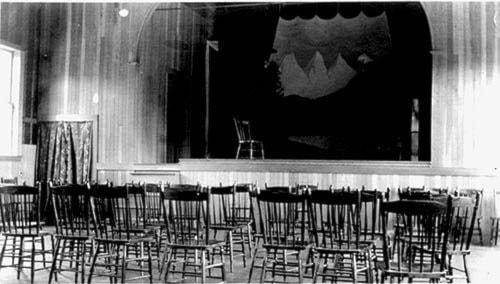In June of 1911, 18 women formed the Ladies’ Club of Whonnock with the intention of building a community hall.
A year later, they had their Ladies Hall (without an apostrophe) – an impressive accomplishment.
At the first annual general meeting in the spring of 1912, the members of the club gave special thanks to two of their members “... for their continuous and unflagging effort on behalf of the club,” without which, it was acknowledged, “the hall would certainly not have reached the stage it is today.”
Alice Spilsbury (née Blizzard), mother of entrepreneur and author Jim Spilsbury, spearheaded the movement and used her abundant energy to make the dream come true. She divided her time between Whonnock and Savary Island, where the Spilsbury family would move permanently in 1914.
In a biography of Jim Spilsbury in B.C. Bookworld, Alan Twigg describes her as a “trouser-wearing suffragette.”
An equally feisty figure was Norwegian-born Mary West (née Lee), a trained nurse who had just returned to Whonnock from the gold fields of Nome, Alaska.
A married woman with two sons, Mary West was also a woman of action: resourceful, practical, caring, and determined.
These two strong women took the lead in the fundraising efforts. They were there for the discussions and decisions of the design of the hall. They negotiated with suppliers of building materials and furniture.
They secured a credit line with a New Westminster bank and typically let the bank manager pay a contribution.
An offer of free land in Ruskin by the Gilchrist family was rejected; the hall had to be in Whonnock.
The two ladies appointed tradesmen and supervised the building until completion.
Their hall was the first public building in Maple Ridge to have electric light.
There was no money for a grand opening. Instead, the first function of the new hall was a fundraiser card game.
Alice Spilsbury and Mary West soon retired from the club, but others who had also helped turn the dream into a reality continued to manage the hall.
The Ladies Club struggled under the load of a mortgage, but after the First World War, thanks to a grant from two anonymous war widows, the mortgage was paid off.
The hall was subsequently dedicated to the memory of the soldiers of “Whonnock district” who fell in the 1914–1918 war and renamed “Whonnock Memorial Hall.”
The community hall was hugely popular, but it was never a financial success. The upkeep of the building depended entirely on public contributions and volunteer work.
During the Second World War, there was no time for maintenance, and after the war, with the growing popularity of cars, interest in community entertainment dwindled.
The building fell into disrepair.
In the 1960s, a vicious struggle arose between those in favour of and those against the preservation of the now derelict building.
In the end, the hall, once the pride of the women of Whonnock, was unceremoniously torn down.
Fred Braches is a local historian who lives in Whonnock.
